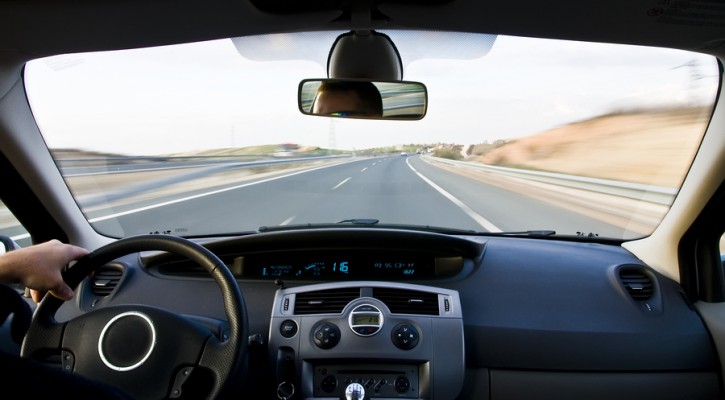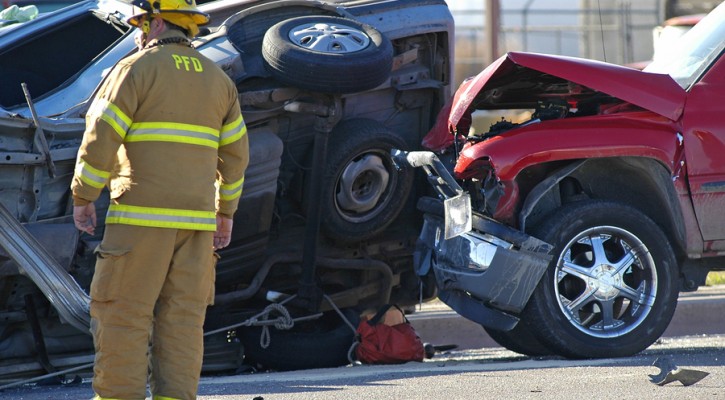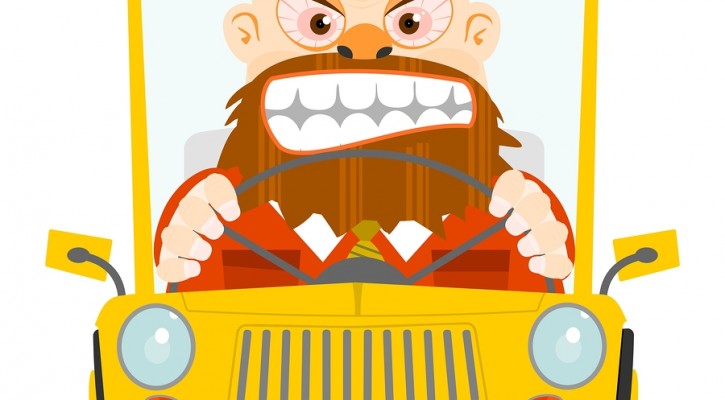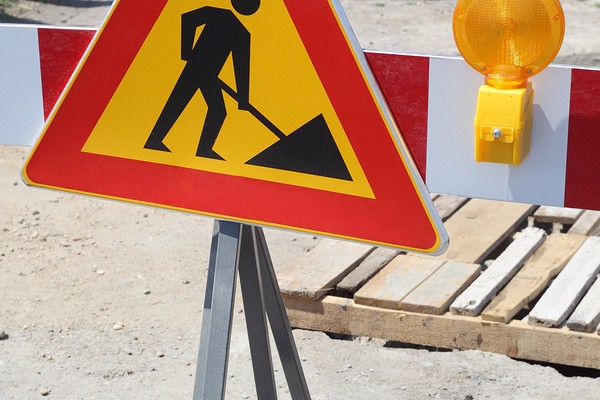
Count to Three, Live Crash-Free
March 19, 2015
One of the oldest lessons in the book is also among the most important: When following another vehicle in traffic, always remain at least three seconds behind them. That’s the 3-Second Rule, and it’s a rule that could save a life.
Ask anyone. Ask the driving instructor, the school bus driver, or the trucker with hundreds of thousands of miles under his belt. They would all vote this old-but-great rule of thumb among the best pieces of advice. Here’s why:
One… It’s simple.
Without having to do any exact calculations, this old rule is easily adaptable to real world variations. Bad weather? Extend the following distance by a second or two. Heavy traffic, icy roads, distracted drivers, tailgaters… you name it, we say add a second or two to it.
Two… It works.
Drivers that follow the 3-second rule will eventually witness a traffic accident, a crash, or even just a close call. More often than not, they will have enough time to avoid that incident, escaping with nothing but a memory of what might have happened.
Three… It saves lives.
In your driving future, there will be countless times when maintaining a safe following distance saves your life, your passenger’s life, and/or the lives of drivers all around you.
There are plenty more reasons to remember this simple rule – it saves gas. It saves repair costs. It lowers insurance rates. It makes the roads safer. It improves traffic flow – but let’s keep it simple and stick with that magic number. The number 3.

Which States Have the Deadliest Roads in America
August 5, 2014
There are parts of America where tourists flock for easy-breezy scenic drives. Then, there are parts of America that drivers avoid like the plague – because these places could actually kill you. Do you know which states are most likely to claim lives on the road? More importantly, do you know why more people die in car crashes in these states?
Luckily, we have found a great, interactive website for learning which states have the deadliest roads in America. You can toggle the columns to see the most traffic deaths by state, the most traffic deaths per capita, and the percentage of traffic deaths caused by DUI.
It’s an incredibly interesting tool with some surprising figures. Find out if your state is one of the places with the deadliest roads in America:

Don’t Be a Menace: The 5 Worst Driving Habits
June 29, 2014
Kindness is contagious, but so is road rage. Don’t start a road rage rampage by committing one of the 5 Worst Driving Habits:
- Tailgating. There’s never, ever, ever a good reason to ride someone’s bumper. If you’re driving faster than the person in front of you, then pass them. If you can’t pass them right away, stay a safe distance behind until it is clear to pass. By riding their bumper, not only are you driving dangerously, but you are also blocking your own view of the road ahead. Also, you are most likely infuriating the other driver, which will only make them drive slower to spite you.
- Turning/Merging Without Blinkers. There is this handy lever by your steering wheel – it controls the blinkers – and it’s there to let other drivers know when you’re about to turn or merge. USE IT! Use it when you’re changing lanes. Use it when you’re turning right. Use it when you’re turning left. Use it when you’re merging. Use it when you’re exiting. Use it when you’re planning on turning left at the stoplight. Don’t be shy. Blinkers are one of the only ways for cars to communicate with each other, so use them.
- Cutting People Off in Traffic. There’s no need to cut off another vehicle in traffic. Being one car ahead isn’t going to drastically change your commute time. If you can’t pass someone safely, then don’t pass them at all.
- Driving Too Slow. Driving 40 mph on a 70-mph highway isn’t just annoying – it’s dangerous. It’s also illegal, depending on the speed of traffic and your own state’s laws.
- Left Lane Cruising. The left lane is for passing. Period. When cars stay in the left lane and drive at the same speed as the rest of traffic, they create congestion behind them. So if you’re not passing someone, then you shouldn’t be in the fast lane.
Let’s make the world a more peaceful place by driving like the safe, responsible, respectful people we are. When everyone has good highway etiquette, everyone wins. Traffic flows smoothly, kindness wins over road rage, and the backdrop fills with sunshine, bunny rabbits and rainbows.
Faster is Better?
June 20, 2014
Here at the Test Questions and Answers blog, we like to advocate for safe driving practices. We like to promote a safety-oriented driving style for all our new drivers. We also like to share the lesser-known facts of life on the road, things that you won’t learn from your local driving instructor.
With that in mind, we’d like to share a video with some counter-intuitive ideas (and surprising facts!) about speed limits. Mainly, the idea that sometimes faster is better.
Now, all you eager teenage speedsters shouldn’t get too excited. This video argues that raising speed limits could reduce traffic collisions. It does not advocate for breaking the law and driving over the speed limit. It certainly doesn’t advocate for street racing, or even driving faster than normal highway speeds.
Nevertheless, it’s always cool to learn something that shatters our common assumptions, our basic understanding of accepted realities. Now that you know something most others don’t, show off your new-found knowledge and share the story!
And remember, don’t just drive faster, #drivesafe.

National Work Zone Awareness Week
April 8, 2014
This week is National Work Zone Awareness Week, and TxDOT is reminding drivers to be cautious when driving through work zones. Their “Be Safe. Drive Smart.” campaign aims to reduce driver and worker fatalities by reminding folks about the dangers of roadside work zones. See the full story here: http://www.thevindicator.com/news/article_6edadfc0-be54-11e3-a011-001a4bcf887a.html
How to Stop Texting While Driving? There’s an App for That.
April 8, 2014
Whether you want to control your own bad habit, or you want to ensure that your teen driver isn’t texting behind the wheel, there’s an app for that. In fact, there’s a few.
TXTShield is a password-protected app that shuts down a phone’s ability to text while the car is in motion. The minimum speed that shuts down the app can be set from 10 mph to 40 mph. When texting shuts down, incoming texts do not show up on the home screen and the app automatically sends a response to the person who texted, letting them know that they are driving and will respond later.
Text Limit is another option. This app shuts down the ability to text, call (except 911) and use the internet when the car reaches 30 mph to 60 mph, depending on what the parent or administrator sets as the minimum speed. It also allows control through a website, and sends location updates to the parent/administrator every 5 minutes.
Complexity of Trucker Crashes
April 3, 2014
There has been a lot of focus on HOS (Hours of Service) and EOBR (Electronic On Board Recorders), both legislative acts aimed at reducing driver fatigue. However, fatigue is not the only, or even the biggest, cause of commercial vehicle accidents. In fact, the Department of Transportation (DOT) found that fatigue accounted for crashes just 1.4% of the time, and 60% of the time no driver was at fault. So, what other factors are we not considering here?
Well, here’s a quick list of crash causes found by the DOT:
Poor vehicle maintenance. This can lead to issues such as tire blowouts, brake problems, engine failures, etc.
Poor training. While most drivers have received training, there is no national standard for entry-level training. Many crashes are caused by improper truck maneuvering, such as turning and passing through intersections.
Other drivers. As distracted driving and cell phone use become a larger issue, truckers have to share the road with more and more bad drivers.
Road debris. Objects on the road can cause drivers to swerve or get a flat tire.
Poor road maintenance. Road damage such as potholes can damage tires and shocks, as well as shift cargo.
Shifting cargo. This can cause changes in weight distribution and driving dynamics.
Vehicles stopped on the road. Whether a car has broken down, an accident has occurred or traffic has suddenly come to a stop, commercial truck drivers caught off guard may not have enough time or distance to bring their big rig to a stop.
While there are a lot of reasons for truck driver crashes, as well as a lot of legislation attempting to prevent commercial vehicle crashes, the reality is that we all just need to drive safer and saner. Keeping a safe distance, respecting other vehicles on the road, avoiding distractions, resisting road rage and following all the traffic laws in place will help make our national highway system safer.

Texting and Driving Simulator
March 29, 2014
There have been a lot of distracted driving campaigns aimed at teen drivers lately, however, Creative Visions is one organization is taking that message to another level. With $31,000 awarded by State Farm, the group has created a simulator that shows teens the dangers of texting and driving. See the full story here:
http://www.woi-tv.com/story/25104558/kids-try-out-texting-and-driving
How to Help Prevent Traffic Jams
March 27, 2014
We’ve all experienced it: the dreaded traffic jam. Sometimes these frustrating backups are caused by accidents or construction, however, there is another breed of traffic jam that is born out of the simple act of bad driving.
Last year, an MIT professor presented an algorithm that could be used in smart cars to alleviate traffic flow problems. Berthold Horn, professor in MIT’s Department of Electrical Engineering and Computer Science, came up with the idea after suffering through the heavy traffic on Massachusetts’ Interstate 93. He explained that backups occurred as a result of variations in speed, which were magnified as they passed through a lane of traffic. One driver would slam on their brakes, causing the driver behind them to do the same, and so on, until cars at the end of the line became backed up, as we often see on highways and interstates. If you’re having trouble wrapping your head around this visual, check out the simulator posted on the MIT website.
The proposed solution was an innovative cruise control system that measured the distance and velocity of vehicles behind and in front of the car, adapting the speed to stay roughly halfway between the two. This way, the car wouldn’t have to slow down as drastically if the vehicle in front braked, and the car would also be less likely to pass on the dramatic change in speed to the car behind it.
However, we don’t necessarily need technology to overcome this traffic flow problem. We simply need to learn how to drive correctly, and foster a culture that encourages smart drivers. If every driver kept their vehicle a reasonable distance behind the person in front of them (1 – 5 car lengths depending on the speed), then we could effectively achieve an ideal state of traffic flow.
Of course, we don’t live in a perfect world with perfect drivers. Most drivers have a “me first” mindset, many are driving full of road rage, and far too many are driving distracted. Then, there are the drivers that fly across three lanes of traffic with no blinker, the drivers that tailgate and brake-check, and the drivers that like to switch lanes every two seconds. All of these things cause disturbances in the normal speed of traffic flow, causing people to slam on their brakes, causing the cars behind them to slow down drastically, and so on all the way down the line until the inevitable backup occurs. This is why we all have to sit in traffic in the middle of a 70 mph interstate with no stop lights, no construction and no accidents. This is how traffic jams are born.
So, be a smart driver and encourage everyone you know to do the same. It’s the quickest and simplest solution… at least until computers begin to do it for us.
